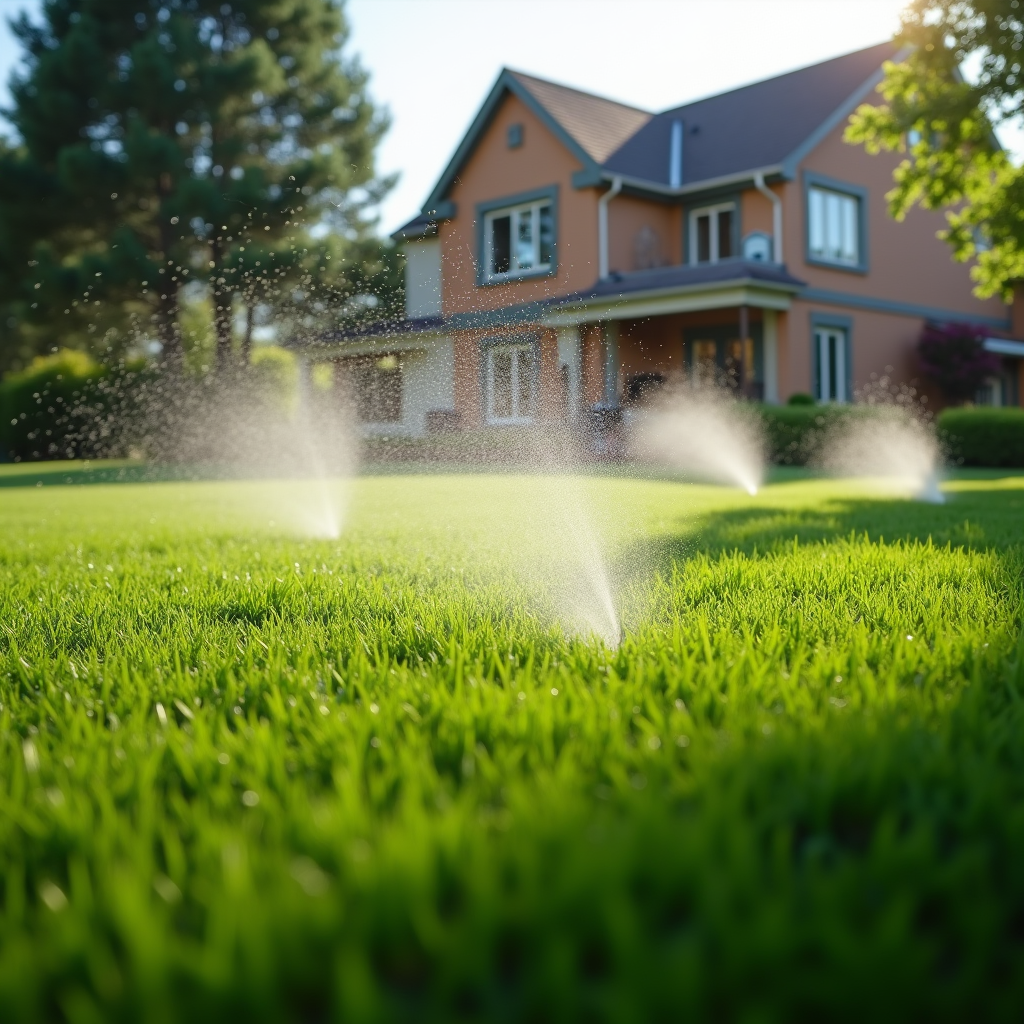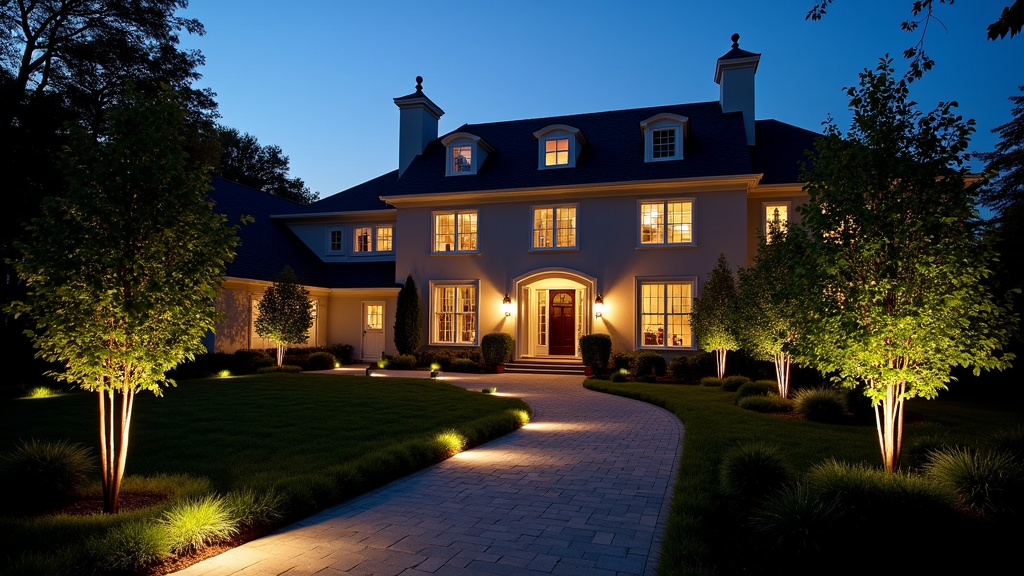Introduction
In today's fast-paced world, technology plays a pivotal role in every sector, and landscape design is no exception. As homeowners and businesses look to create stunning outdoor spaces, the need for efficient, creative solutions has skyrocketed. The advent of technological tools has revolutionized how we visualize our future landscapes, allowing designers and clients alike to explore ideas before diving into implementation.
Imagine standing in your backyard, envisioning a vibrant garden filled with flowers, shrubs, and a tranquil water feature. Now, picture being able to see that vision come to life digitally before planting a single seed or laying down any stones. That's the power of technology in landscape design! In this article, we'll explore various technological advancements that help visualize landscape designs more vividly than ever before.
Understanding Landscape Design
What is Landscape Design?
Landscape design involves the planning and creation of outdoor spaces that harmoniously blend https://rentry.co/a25f2wmn natural elements with human-made structures. It encompasses everything from gardens and parks to commercial properties. The goal is to enhance the aesthetic appeal while considering environmental factors and functionality.
Importance of Designing Landscapes
Designing landscapes isn't just about making things pretty; it’s about creating functional spaces that promote well-being. A well-designed landscape can:
- Increase Property Value: Beautifully landscaped properties tend to sell for higher prices. Enhance Curb Appeal: Attractive outdoor spaces make a great first impression. Promote Sustainability: Thoughtful design can lead to eco-friendly practices.
Elements of Landscape Design
To effectively visualize your future landscape designs, it's crucial to understand the following key elements:
Plants: Trees, shrubs, flowers – each serves a purpose in aesthetics and ecology. Hardscapes: Patios, walkways, walls contribute to structure and usability. Water Features: Ponds or fountains add tranquility and visual interest. Lighting: Proper illumination enhances safety and ambiance.Using Technology to Visualize Your Future Landscape Designs
With various tools at your disposal today, visualizing your future landscape designs has never been easier or more exciting!

3D Modeling Software: A Game Changer
One of the most significant advancements in technology for landscape designers is 3D modeling software. Tools such as SketchUp or AutoCAD allow designers to create detailed three-dimensional representations of their plans.
Advantages of 3D Modeling:
- Realistic Visualization: Clients can see what their landscapes will look like from multiple angles. Interactivity: Designers can make real-time changes based on client feedback. Precision Planning: Accurate measurements ensure successful installations.
Virtual Reality (VR) Experiences
Imagine walking through your designed space before it's even built! VR technology makes this possible by immersing users in a virtual environment where they can experience their future landscapes firsthand.
Benefits of VR in Landscape Design:
- Enhanced Client Engagement: Clients are more likely to feel connected when they can "walk through" their designs. Immediate Adjustments: Changes can be made on-the-fly based on user feedback during a VR session.
Augmented Reality (AR) Applications
AR technology overlays digital information onto the real world through devices like smartphones or tablets. For instance, apps such as Houzz offer AR features where users can visualize how plants or furniture would look in their space.
Key Features of AR Tools:
- Instant Visualization: Users can see products placed directly onto their existing environment. User-Friendly Interface: Most AR apps are designed for easy navigation.
Drones in Landscape Design
Drones have taken aerial photography and surveying to new heights—literally! They provide an excellent perspective for analyzing large landscapes quickly.
How Drones Enhance Landscape Design:
- Detailed Surveys: Capture high-resolution images for accurate assessments. Site Analysis: Ideal for understanding topography and existing vegetation.
Creating Detailed Plans with Technology
Once you’ve gathered inspiration using advanced technologies like those mentioned above, developing detailed plans becomes crucial.
CAD Software: Precision Planning Made Easy
Computer-Aided Design (CAD) software allows designers to create precise drawings that serve as blueprints for construction teams.
Benefits of CAD Software:
Accuracy: Ensures all dimensions are correct. Efficiency: Saves time by automating repetitive tasks. Documentation: Provides essential files for permits and contractors.Online Landscape Design Tools
Several online platforms enable DIY enthusiasts to create their own landscape designs easily without needing extensive training or expertise.
Popular Online Tools Include:
Garden Planner: Drag-and-drop features make designing intuitive. SmartDraw: Offers templates specific to landscaping projects.Exploring Sustainable Practices Through Technology
As sustainability becomes increasingly important in landscape design, technology offers innovative ways to incorporate eco-friendly practices into your plans.
Smart Irrigation Systems
Utilizing smart irrigation systems ensures that water is used efficiently by monitoring soil moisture levels and weather conditions in real-time.

Advantages Include:
- Water Conservation: Reduces waste by ensuring plants receive only what they need. Cost Efficiency: Lowers utility bills by optimizing water usage.
Solar-Powered Lighting Solutions
Incorporating solar-powered lights not only reduces energy consumption but also adds ambiance without increasing electricity costs!
Benefits of Solar Lighting:
Eco-Friendly: Uses renewable energy sources. Easy Installation: No need for electrical wiring; simply place them where needed!FAQs About Using Technology in Landscape Design
What are the benefits of using 3D modeling software?- 3D modeling software allows clients to visualize designs more realistically, make quick adjustments based on feedback, and ensure precision planning throughout the project process.
- VR provides an immersive experience where clients can virtually walk through their proposed landscapes, fostering emotional connections with designs.
- Yes! Most AR apps are designed intuitively so users without technical backgrounds can easily navigate them.
- Drones provide high-resolution aerial imagery that assists designers with site analysis and surveying large areas quickly.
- Smart irrigation systems monitor moisture levels and adjust water usage accordingly—reducing waste while keeping plants healthy.
- Platforms like Garden Planner and SmartDraw offer user-friendly interfaces with drag-and-drop functionality ideal for beginners looking to create personalized designs.
Conclusion
The integration of technology into landscape design has truly transformed how we visualize our outdoor spaces—creating opportunities that were once limited only by imagination! From advanced 3D modeling software enabling realistic visualizations down-to-earth drones surveying vast terrains with ease—the possibilities seem endless now!
As you embark on your journey toward designing landscapes suited perfectly just-for-you—consider harnessing these cutting-edge technologies at every step along the way! Whether hiring professionals or going it alone as a DIY enthusiast—there's no shortage of resources available today catering specifically towards enhancing both creativity AND practicality within this beautiful field!
So go ahead; dream big AND embrace all that technology offers because your perfect outdoor oasis awaits right around the corner!